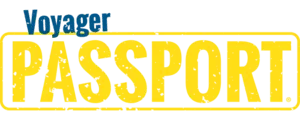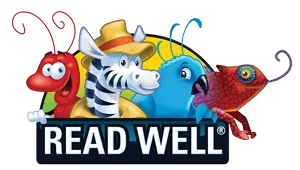What Is Peer Tutoring?
Peer tutoring is a dynamic learning intervention tool involving two or more students who act as both tutors and tutees for each other, increasing comprehension and engagement on both sides. Same-age peer tutoring, cross-age peer tutoring, and reciprocal peer tutoring all benefit from a concept called the protégé effect. When peer tutoring is properly implemented, students build confidence, foster communication skills, and create a collaborative learning environment. This article breaks down the benefits and appropriate circumstances for peer tutoring, along with a few examples of how to implement it in your own classroom.
Joseph Joubert wisely once said, “To teach is to learn twice.” This quote succinctly describes a phenomenon commonly known as the protégé effect. Teaching someone else allows a student to deepen their knowledge of the topic and this effect is what makes peer tutoring an incredibly powerful learning tool.
Peer tutoring can take many forms: same-age peer tutoring, reciprocal peer tutoring, and cross-age peer tutoring. Each of these techniques is particularly valuable in specific-use cases. However, they are all distinct from traditional tutoring in that they focus on peer discussion and feedback, rather than top-down dictation.
Benefits of Peer Tutoring in Education
In comparison to traditional tutoring, peer tutoring presents a variety of benefits for both the tutor and the tutee. Especially in same-age peer tutoring, the process of verbalizing course concepts to the tutee forces the tutor to build a few key skills. These skills include organizing and presenting the key points of a lesson in a digestible way for the tutee.
Similarly to traditional tutoring, the tutee may still learn from the direct instruction of the tutor; while this can be an effective learning strategy, the effectiveness of peer tutoring lies in the discussion. When the tutee presses on areas of confusion or asks clarifying questions, he/she forces the tutor to present the material more effectively. The tutor must find new ways of delivering the same information. This may mean expanding upon parts of the topic that weren’t initially covered, or reprioritizing how he/she presents the information. During this process, both parties gain a deeper understanding of the material. This discussion-based style of peer tutoring leads to improved comprehension and develops key communication skills for both the tutor and the tutee.
Diverse Types of Peer-Tutoring Strategies
There are a variety of different types of peer tutoring, each with its strengths and drawbacks. Based on the needs of the students involved, there is likely a specific peer-learning strategy that will be most effective for each situation. Here are the most common types of peer-assisted learning strategies and a brief description of their appropriate applications.
- Same-Age Peer Tutoring: In an instance where particular students might need more individualized support, pairing a higher-performing and lower-performing student together can provide that support. This arrangement is typically done in pairs or small groups and is often led by the higher-performing student in a structured format. The lower-performing student has access to direct help while the higher-performing student remains engaged with the material in a teaching format.
- Reciprocal Peer Tutoring: When there are two students with relatively similar understanding of the material, pairing them in reciprocal peer tutoring can be a highly effective learning tool. Students may take turns reading course material to each other and asking probing questions to encourage synthesis and discussion.
- Cross-Age Peer Tutoring: This tutoring model involves pairing older students with younger students and is incredibly beneficial when there are foundational concepts that transfer among grades. The younger student learns necessary information that will be directly relevant in years to come, while the older tutor can reaffirm foundational concepts practically.
Selecting Suitable Peer-Tutoring Models
Selecting the appropriate method of peer tutoring is just as important for improving comprehension as the intervention itself. Different models will apply depending on the subject matter and the number of students involved in the exercise. Additionally, the types of interaction between the students and the rewards earned for the exercise will play a role in determining the best choice of peer tutoring strategy.
Cross-age peer tutoring may be most appropriate when trying to enhance the self-esteem of an older student. By providing expert instruction to a younger student in a two-person setting, the older student can refine his/her knowledge in a stress-free environment. Alternatively, when trying to facilitate classwide discussion, reciprocal peer tutoring can significantly increase comprehension for groups of two or more students.
The alternating structure of the tutor-tutee relationship allows students to give and receive feedback from their peers. As the students in each group progress, pre-selected group rewards can be earned. This structure provides social reinforcement for group learning and gives a tangible reward to keep students motivated.
Implementing Peer Discussions in the Classroom
Peer discussions can be implemented across a variety of subjects. Most commonly, they are used in reading and mathematics classes to facilitate engagement.
- Same-Age Peer Tutoring in Reading: After pairing a high-performing student with a low-performing student, the pair read aloud to each other for five minutes each, starting with the high-performing student. Once the first five-minute period ends, the students switch and the low-performing student rereads the same selection aloud. The students then attempt to summarize the main idea of the passage in 10 words or less. This encourages synthesis after building a solid foundation of understanding.
- Same-Age Peer Tutoring in Math: The high-performing student will coach the low-performing student through a section of math problems. During this coaching, they should ask the low-performing student probing questions and offer guidance along the way. The student pairs should earn points for accuracy and cooperation.
Peer-Assisted Learning: A Case Study
When implemented effectively, peer tutoring can be an incredibly powerful tool for fostering collaboration and positive social reinforcement in the classroom. This transformative aspect of peer tutoring allows students to take responsibility for, and ownership of, the collective learning of the class. Let’s look at this example of effective peer tutoring within the classroom.
One particular case from New York City charter school KIPP Infinity saw a talented, yet unconfident student become a leader of his classroom through peer tutoring. This frequently absent and often disengaged student approached his teacher early in the year asking if he could become a peer tutor. Since the culture of this classroom placed a great amount of responsibility on its peer tutors, this request wasn’t taken lightly. However, he was given an opportunity based on his strong math skills. He rose to the challenge of this new responsibility and as he began helping others, his confidence, attendance, and engagement improved. He, along with the rest of his eighth grade cohort, had a record-breaking year in the school's history, outperforming a vast majority of schools on the New York State Exam.
Reading Interventions With Voyager Sopris Learning
Voyager Sopris Learning® offers effective reading solutions for educators, providing research and instruction for direct implementation in the classroom. Both Voyager Passport® and Read Well® offer partner-reading exercises that utilize various types of peer-assisted learning strategies. These intervention programs provide step-by-step guides for use in the classroom. Explore the full suite of evidence-backed reading programs here.
Conclusion
While the form of peer tutoring must be appropriate for the learning goals of the students involved, both the tutor and the tutee benefit greatly from these exercises. The most effective form will depend on the subject matter, the number of students involved in the exercise, and the type of interaction between the students. Educators should experiment with different types of peer discussion methods to find what works well for their classroom.
Peer tutoring is a highly effective tool for boosting comprehension and engagement among students. To successfully implement these methods, there must be worthwhile incentives for the students. Social reinforcement, rewards for successful cooperation, and experiencing fulfillment in the exercise are all key to developing the right classroom environment for peer tutoring. To learn about tutoring solutions offered by Voyager Sopris Learning, visit our tutoring solutions page here.

